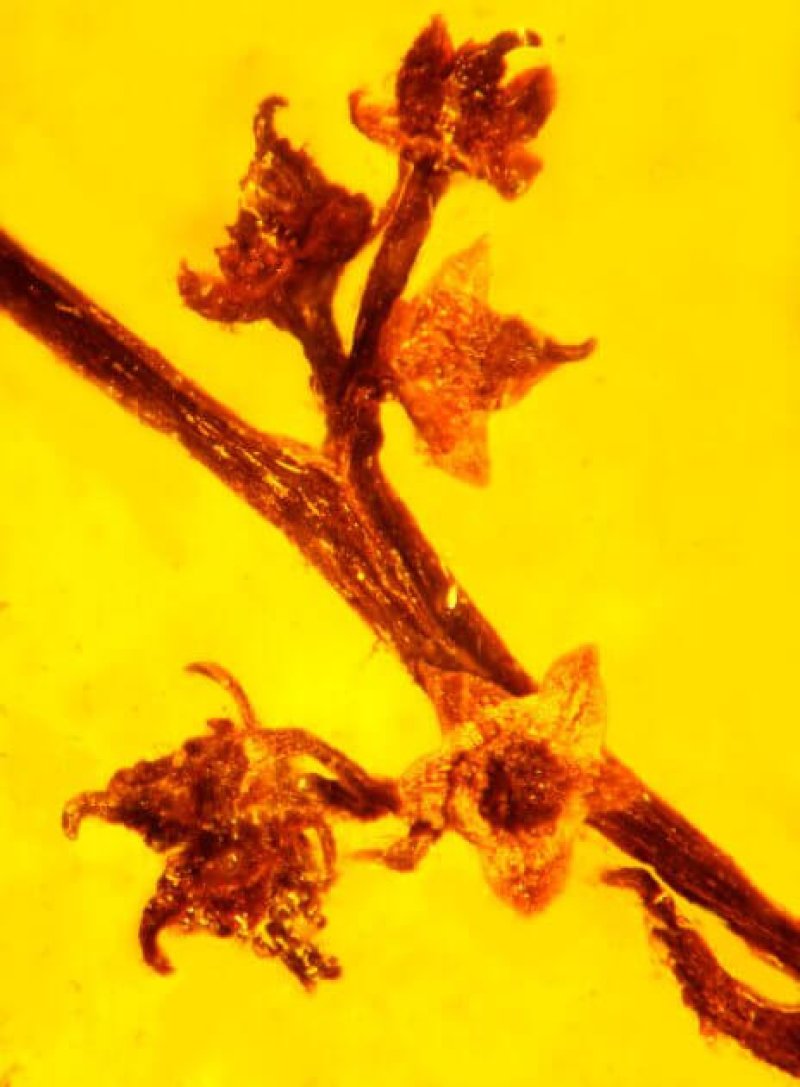Scientists recently discovered a 100-million-year-old piece of amber, which revealed the oldest evidence of sexual reproduction in a flowering plant.
The discovery includes a group of 18 flowering plants with sticky pollen, indicative of an insect pollinator, and the amber preservation allows us to see pollen tubes growing down into the style as well as incipient seed formation, both indications of sexual reproduction—the earliest sexual reproduction known in plants.
Researchers from Oregon State University and Germany published their findings on the fossils in the Journal of the Botanical Institute of Texas. According to a press release from Oregon State University, the flowers “are in remarkable condition, as are many such plants and insects preserved for all time in amber. The flowing tree sap covered the specimens and then began the long process of turning into a fossilized, semi-precious gem. The flower cluster is one of the most complete ever found in amber and appeared at a time when many of the flowering plants were still quite small.”
Even more remarkable is the microscopic image of pollen tubes growing out of two grains of pollen and penetrating the flower’s stigma, the receptive part of the female reproductive system. This sets the stage for fertilization of the egg and would begin the process of seed formation – had the reproductive act been completed. According to science writer Jerry Coyne, there is still some doubt about whether or not this discovery is evidence of sexual reproduction, but this is nevertheless an important discovery:
Now if this pollen really is fertilizing the ovule, then it truly is sexual reproduction. It’s another question entirely whether this is cross-fertilization (pollen from another individual) or self-fertilization (pollen from the same individual). Selfing doesn’t require insects, and cross-pollination can occur by other mechanisms, such as wind. But since the “selfing” condition is invariably evolved from outcrossing ancestors, this does at least provide the earliest date for known cross-pollination in plants. And since we know that “thrips” (small insects) were pollinating gymnosperms (“naked seed” plants like gingkos and confers) in the early Cretaceous, there were already insects around whose descendants could pollinate flowering plants.
Read the full, original post: Ancient flowering plants found in amber, suggests insect pollination 100 million years ago































